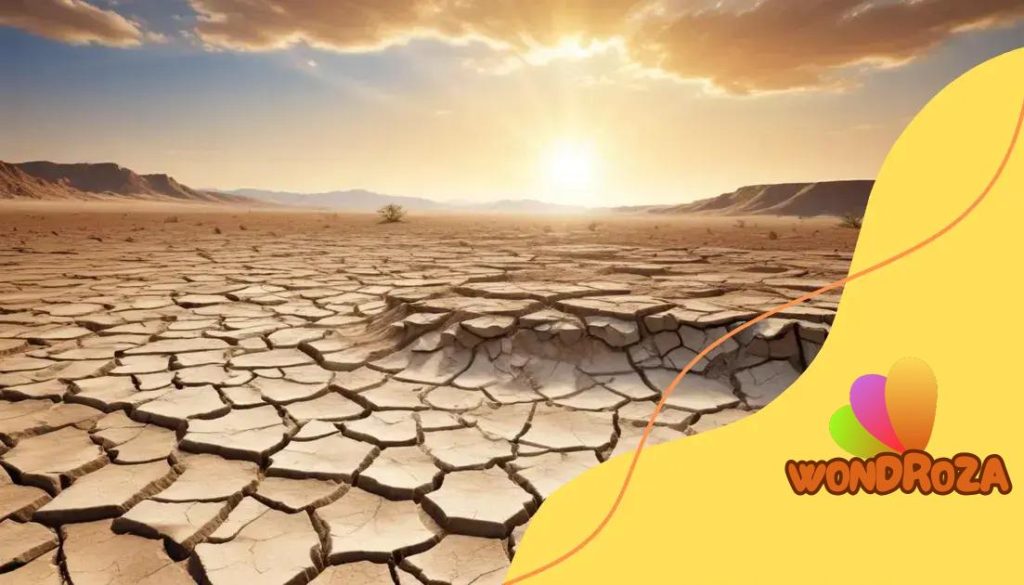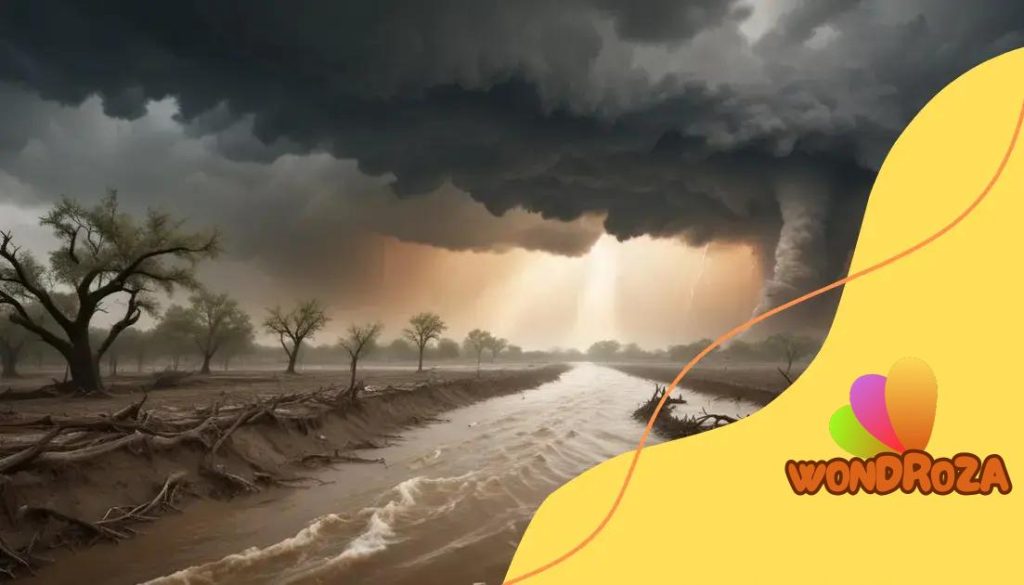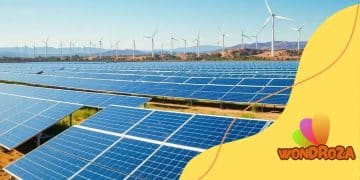Western heat wave and record-high temperatures: A looming crisis

To prepare communities for future heat waves, it is essential to implement awareness programs, establish cooling centers, create emergency response plans, engage the community, and invest in green infrastructure.
The Western heat wave and record-high temperatures are more than just a weather story; they impact daily life and health.
Have you felt the rising temperatures this summer? Let’s dig deeper into what this means for us.
Understanding the causes of the heat wave
Understanding the causes of the Western heat wave is crucial to addressing the challenges it brings.
Various factors contribute to these extreme weather conditions, affecting not just the environment, but also our daily lives.
Climate change
One major factor is climate change. As the planet warms due to increased greenhouse gas emissions, we experience more frequent and intense heat waves.
This warming shifts weather patterns, causing unusual heat in regions that typically have milder summers. The Western heat wave exemplifies this global trend, showing how warming pushes temperatures beyond historical norms.
Communities across the West must now adapt to summers that are hotter, longer, and more dangerous than ever.
Geographical influences
Geography plays a significant role as well. Areas with fewer trees and green spaces tend to heat up more during a heat wave.
Urban zones, often called heat islands, absorb and retain heat, leading to higher temperatures.
During the Western heat wave, cities are often hotter than rural areas because of concrete and asphalt trapping heat. Expanding green spaces could make a difference in cooling these urban environments.
Atmospheric patterns
Additionally, atmospheric conditions can contribute to extreme temperatures. High-pressure systems trap warm air, preventing it from escaping and leading to prolonged heat events.
Changes in wind patterns can also shift warm air to areas that might not usually experience such heat.
These high-pressure systems are a key reason the Western heat wave lasts so long, creating extended periods of record-breaking temperatures.
El Niño and La Niña
The climate phenomena known as El Niño and La Niña are also influential. These patterns affect ocean temperatures and can change weather systems globally.
They can lead to increased temperatures in specific regions during certain periods.
In fact, scientists note that El Niño may amplify the Western heat wave, making it more intense and widespread. Monitoring these cycles helps in predicting future risks.
Human activity
Lastly, human activities exacerbate heat waves. Urbanization, deforestation, and industrialization contribute to higher temperatures. Improving our lifestyle choices can help mitigate these effects.
The Western heat wave highlights how human-driven climate impacts and infrastructure choices combine to create dangerous living conditions.
Effects of record-high temperatures on health
The effects of record-high temperatures on health are significant and can be life-threatening.
As temperatures rise, our bodies struggle to cope, leading to various health issues. Staying informed about these impacts is essential for everyone.
Heat-related illnesses
Firstly, heat waves increase the risk of heat-related illnesses. Conditions like heat exhaustion and heat stroke can occur when the body becomes overheated.
Symptoms may include dizziness, nausea, and headache, which should not be ignored.
During the Western heat wave, hospitals have reported spikes in emergency visits for dehydration and heat stroke, showing how quickly the body can be overwhelmed.
Mental health impacts
Additionally, extreme heat can affect mental health. High temperatures are linked to increased rates of anxiety and depression.
Prolonged exposure to heat can cause stress and irritability, making it harder for people to cope with daily challenges.
The Western heat wave adds another layer of stress, particularly for those already struggling with mental health conditions.
Respiratory issues
Respiratory problems can also worsen during heat waves. Poor air quality, often exacerbated by high temperatures, can trigger asthma attacks and other respiratory conditions.
Vulnerable populations like children and the elderly are at greater risk. In the Western heat wave, wildfire smoke has combined with heat to worsen air quality, leading to even greater health risks.
Vulnerable populations
Certain groups are more susceptible to the effects of extreme heat. The elderly, people with pre-existing health conditions, and those without access to air conditioning face higher risks. Ensuring these individuals stay cool and hydrated is crucial.
The Western heat wave has shown that inequality in housing and access to cooling leaves many at heightened danger.
Preventive measures
To mitigate the health effects of high temperatures, it’s vital to stay hydrated and seek shade when outdoors.
Staying indoors during peak heat hours and using fans or air conditioning can help prevent heat-related illnesses. Regular health check-ups can also aid in monitoring how extreme heat affects your well-being.
These practices are lifesaving during the Western heat wave, when communities often face temperatures well above 100°F for consecutive days.

How climate change contributes to extreme weather
Climate change is a major factor in the increasing frequency of extreme weather events.
These changes in the environment have far-reaching effects, not just on weather patterns but also on our daily lives.
Global warming
At the heart of climate change is global warming. The rising temperatures are directly linked to human activities, such as burning fossil fuels.
This process releases greenhouse gases, trapping heat in the atmosphere and leading to a warmer planet.
The Western heat wave is a prime example of how global warming translates into local consequences that affect millions.
Shifts in weather patterns
As the climate warms, weather patterns shift. Some regions experience heavier rainfall while others face severe droughts.
This unpredictability in weather can lead to significant repercussions, including crop failures and water shortages.
The Western heat wave illustrates these shifts, often following or worsening droughts across the region.
Intensification of storms
Moreover, warmer ocean temperatures contribute to more intense storms and hurricanes. These storms gain strength as they absorb the excess heat from the water.
With climate change, we’ve seen an increase in storms that cause devastating floods and destruction.
Heat waves and storms often go hand in hand, with the Western heat wave straining infrastructure already impacted by other climate events.
Increased frequency of heat waves
The number and severity of heat waves have also risen due to climate change. As temperatures soar, the risk of health issues increases, particularly for vulnerable populations.
Communities must prepare for these extreme heat events. Each Western heat wave sets new records, reminding us that climate change is not a distant threat, it’s happening now.
Impacts on ecosystems
Extreme weather also affects ecosystems. Changes in temperature and precipitation can disrupt habitats, leading to shifts in biodiversity. Some species may struggle to adapt, which can cause declines in populations.
The Western heat wave has disrupted wildlife, reducing food and water availability for many species.
Steps to take during a heat wave
During a heat wave, taking the right steps is essential to stay safe and healthy. The extreme temperatures can pose a serious risk, so being prepared is key to protecting yourself and your loved ones.
Stay hydrated
One of the most important things to do is to stay hydrated. Drink plenty of water throughout the day, even if you don’t feel thirsty.
Avoid beverages with caffeine and alcohol, as they can dehydrate you.
This is especially important during the Western heat wave, where dehydration cases rise dramatically.
Limit outdoor activities
It’s best to limit outdoor activities, especially during the hottest parts of the day. If you need to be outside, try to do so early in the morning or late in the evening when temperatures are cooler.
When working or exercising outside, take frequent breaks in a shaded area.
In the Western heat wave, outdoor laborers face particular risks, making protective workplace policies essential.
Use fans and air conditioning
If you have access to air conditioning, use it to keep your home cool. If you don’t have air conditioning, find places that do, like shopping malls or community centers.
Fans can help circulate air, but be aware they may not be enough on extremely hot days.
Cooling centers established during the Western heat wave have saved lives for those without reliable air conditioning.
Protect yourself from the sun
Wear loose-fitting, lightweight, and light-colored clothing to help stay cool. A broad-brimmed hat and sunglasses can protect you from the sun’s rays.
Applying sunscreen on exposed skin is essential to prevent sunburn, which can worsen under severe heat.
The Western heat wave demonstrates how small protective actions reduce health risks during record-breaking temperatures.
Check on vulnerable individuals
Check on elderly neighbors and those with health issues, as they are more susceptible to heat-related illnesses. Encourage them to stay cool and hydrated.
Offering to help by bringing them water or inviting them to your air-conditioned home can make a big difference.
During the Western heat wave, community action has proven critical to saving lives.
Preparing communities for future heat waves
Preparing communities for future heat waves is essential to ensuring everyone’s safety and health.
As these extreme weather events become more frequent, proactive measures can help mitigate their impact.
Community awareness programs
One key step is to develop community awareness programs. These programs can educate residents about the risks associated with heat waves and the necessary precautions to take.
By increasing awareness, communities can foster a culture of preparedness.
In the Western heat wave, public awareness campaigns have been shown to reduce hospital admissions by informing people early.
Establish cooling centers
Creating designated cooling centers is another effective measure. These centers provide a safe space for individuals without air conditioning to cool down during extreme heat.
They should be easily accessible and properly equipped with water, fans, and other cooling resources.
Expanding such centers is critical for areas repeatedly hit by the Western heat wave.
Emergency response plans
Local governments should implement comprehensive emergency response plans that address heat waves specifically.
This includes coordinating with healthcare providers to monitor vulnerable populations, such as the elderly and those with pre-existing conditions.
The Western heat wave has revealed gaps in these plans, showing the urgent need for more coordinated efforts.
Community engagement and resources
Engaging the community in preparedness efforts is crucial. Involving local organizations, schools, and businesses can create a broader network of support.
Distributing resources like flyers, newsletters, and online content is a great way to share tips and information.
This approach has been effective during the Western heat wave, helping spread lifesaving information quickly.
Infrastructure improvements
Investing in green infrastructure can also help combat heat. Planting trees and creating green spaces not only provides shade but also helps cool the surrounding air. These improvements can make a noticeable difference during heat waves.
For regions repeatedly struck by the Western heat wave, such long-term investments will make cities more livable in the face of rising heat.
In conclusion, preparing communities for future heat waves is vital in ensuring safety and health. It requires collective efforts in awareness, infrastructure improvements, and resources.
By fostering education about heat impacts and establishing support systems, we can help our communities thrive despite rising temperatures.
The Western heat wave serves as both a warning and a lesson: without preparation, lives and ecosystems are at risk, but with proactive steps, we can adapt and build resilience for the future.
FAQ – Preparing Communities for Future Heat Waves
What are community awareness programs?
Community awareness programs are initiatives aimed at educating residents about the risks of heat waves and how to stay safe during extreme temperatures.
Why are cooling centers important during heat waves?
Cooling centers provide safe, air-conditioned spaces for individuals to escape extreme heat, especially for those without access to air conditioning at home.
How can local governments prepare for heat waves?
Local governments can create emergency response plans that include monitoring vulnerable populations, establishing cooling centers, and coordinating community resources.
What role does green infrastructure play in heat wave prevention?
Green infrastructure, such as planting trees and creating parks, helps lower surrounding temperatures and provides shade, making communities more resilient to heat waves.





